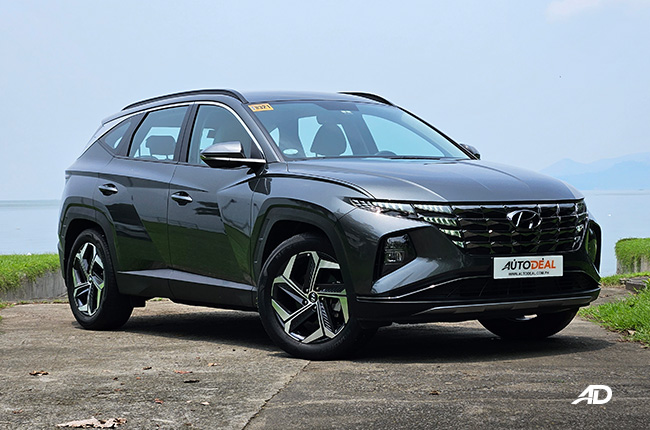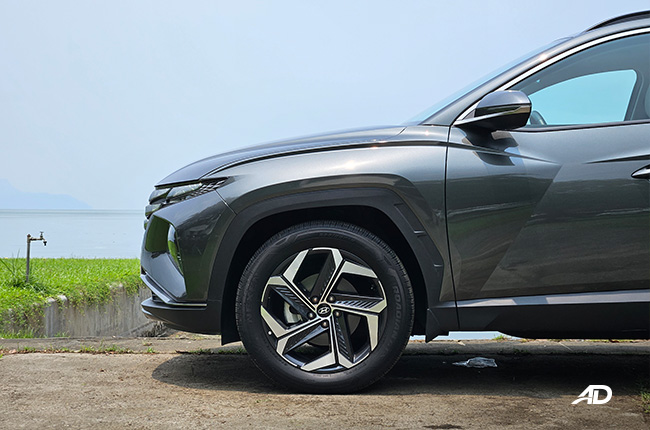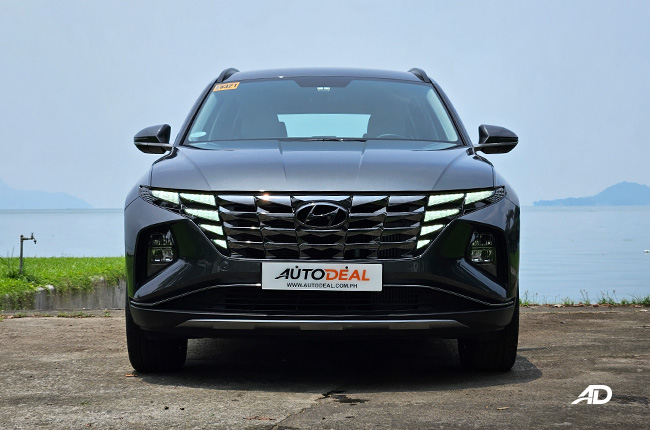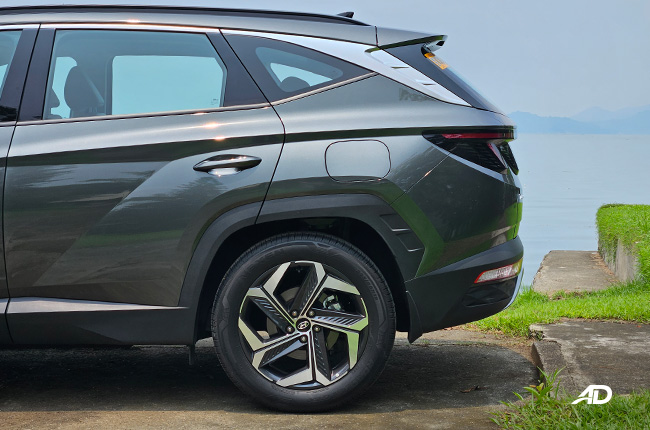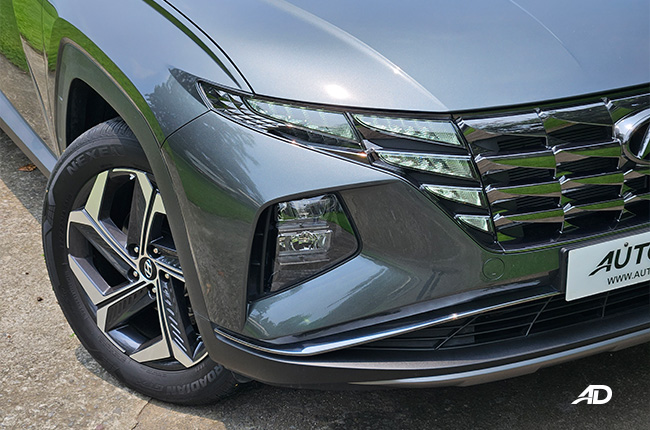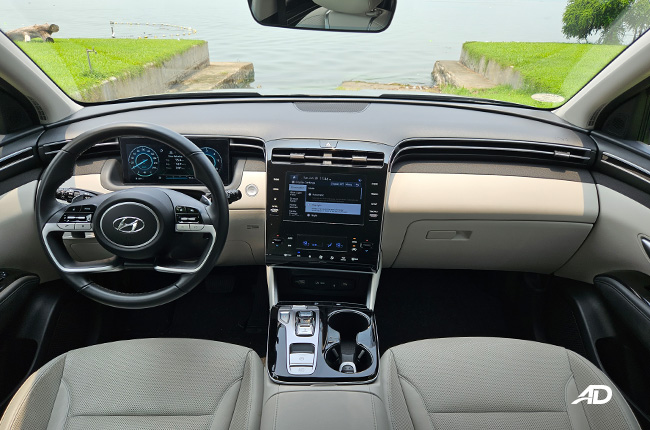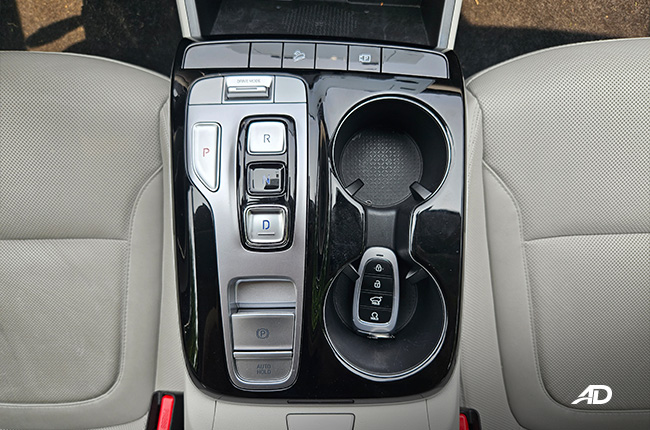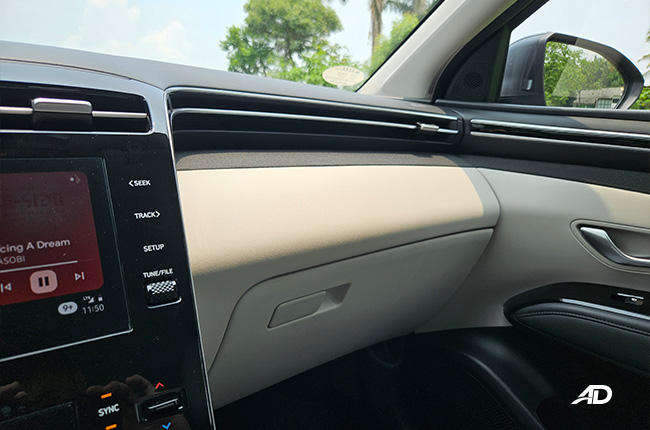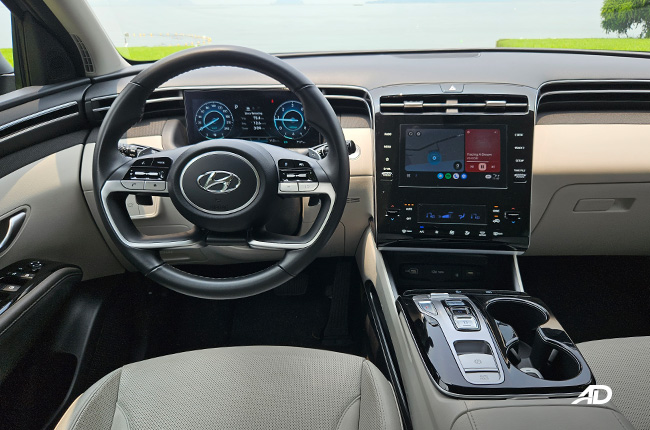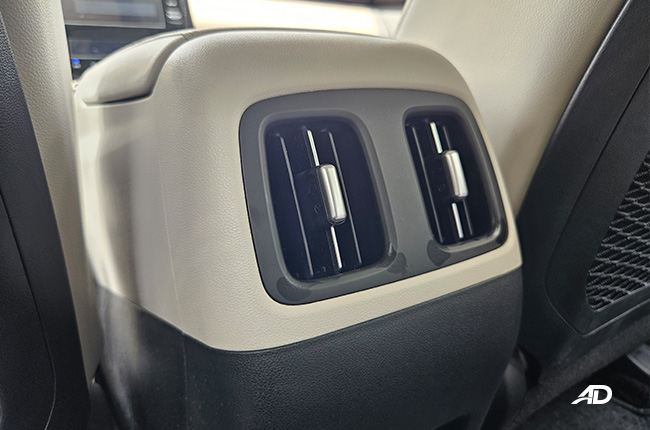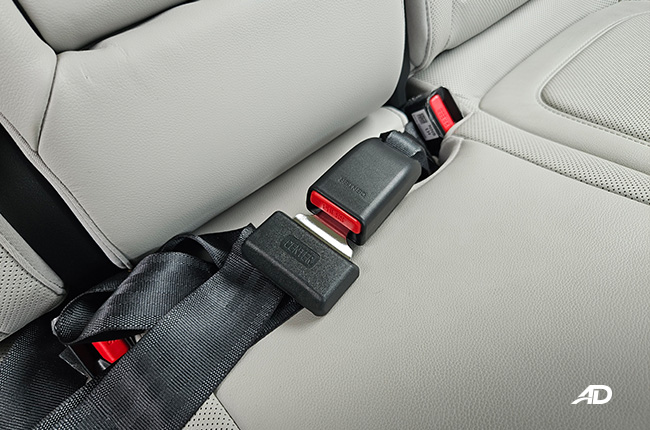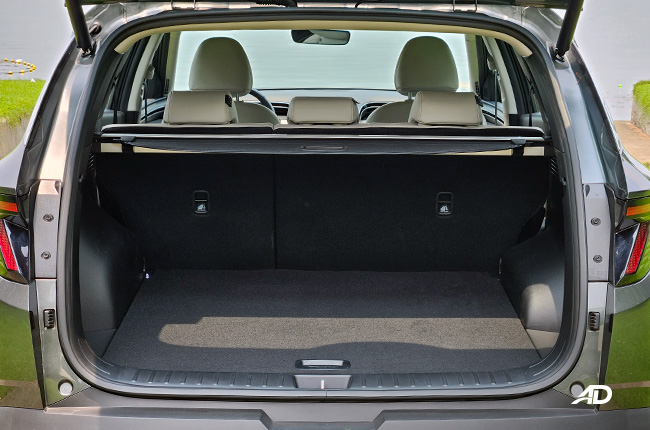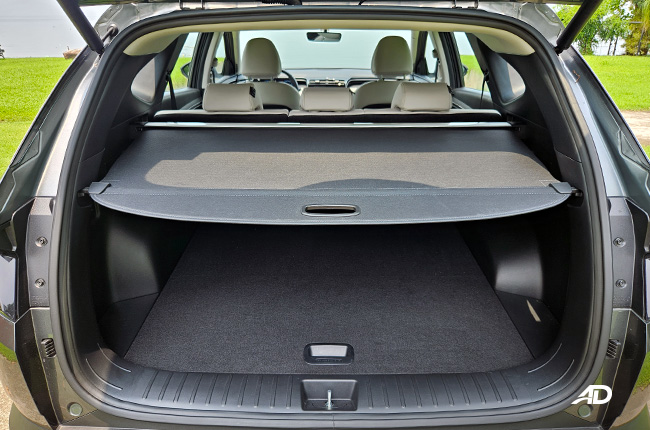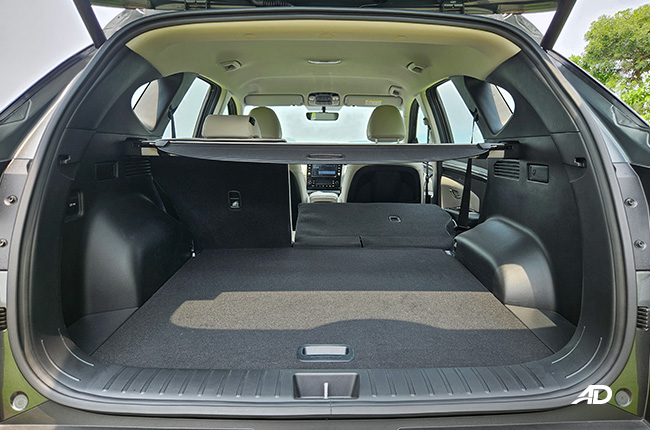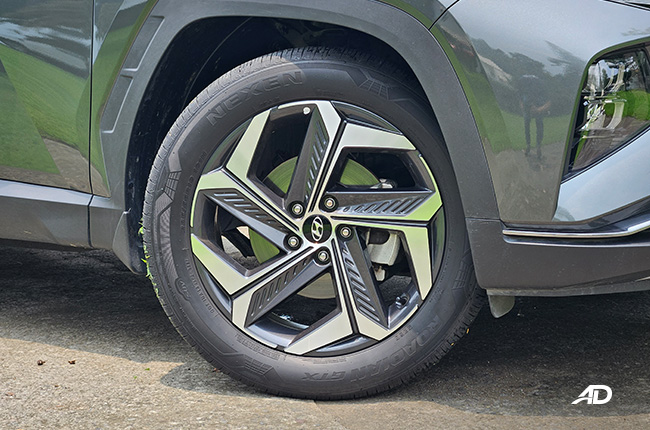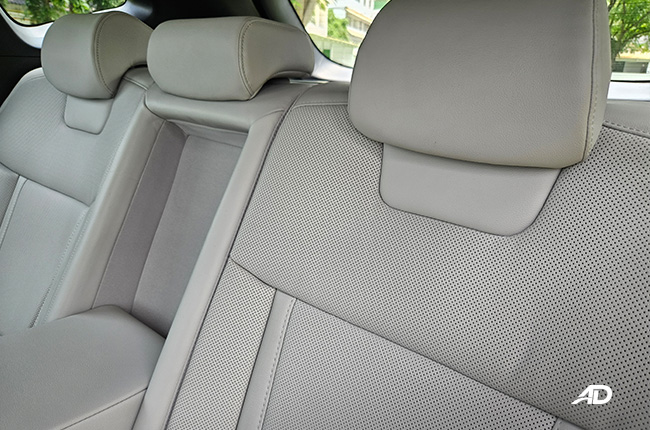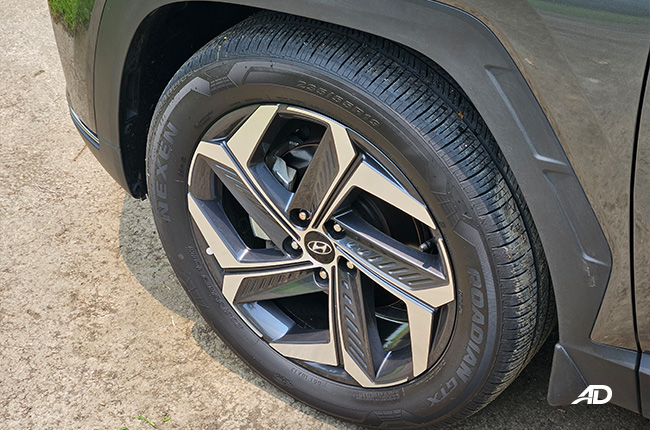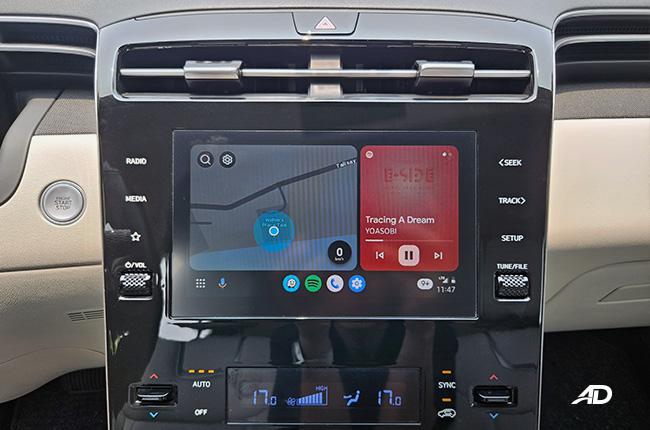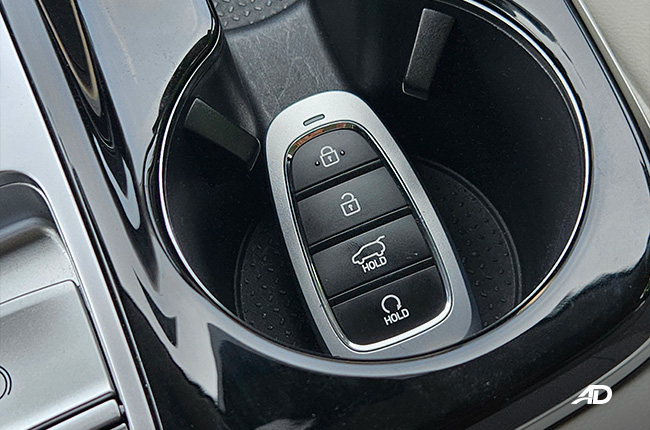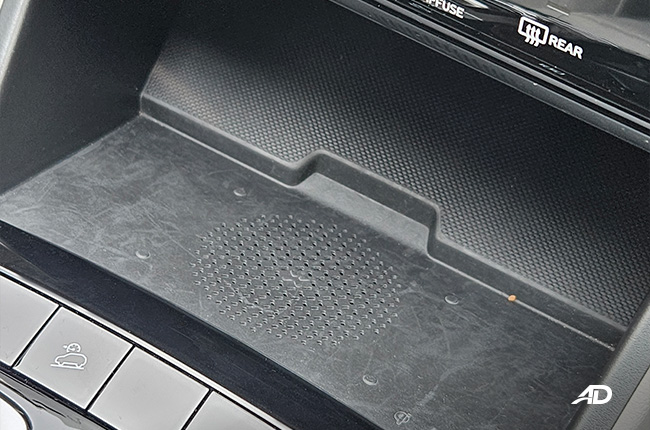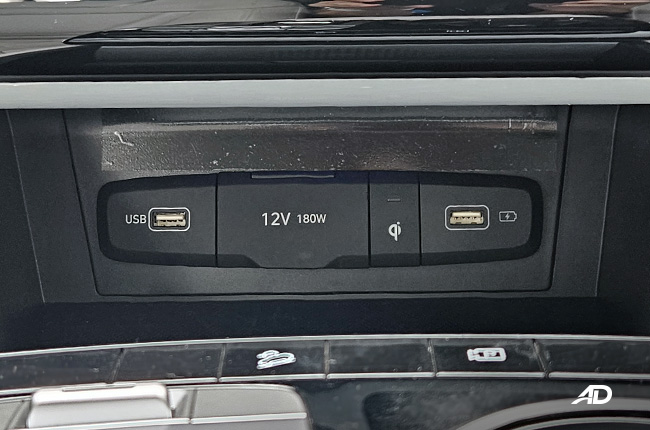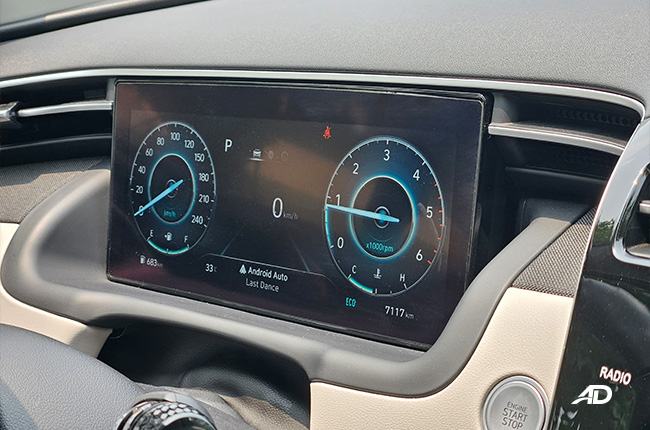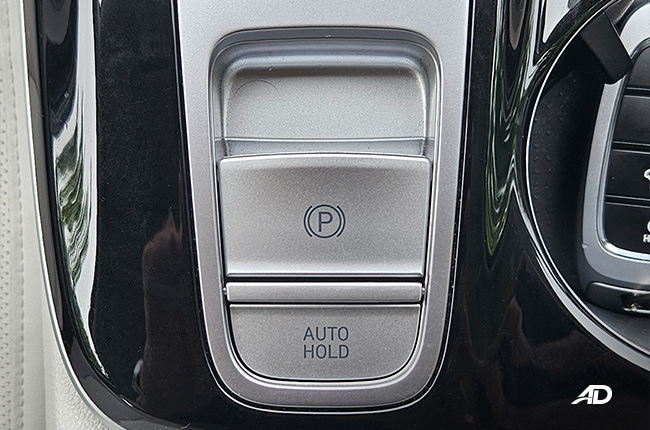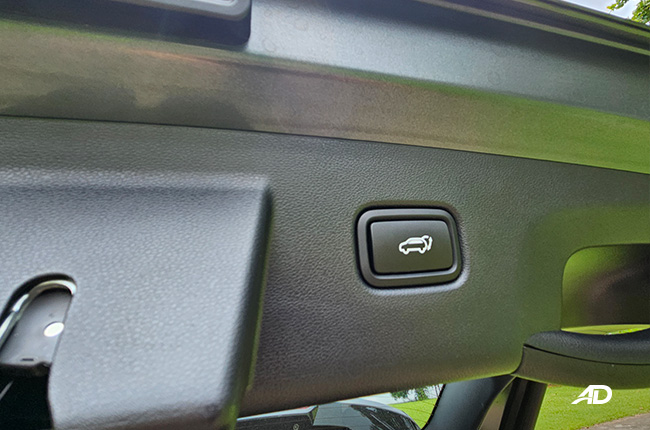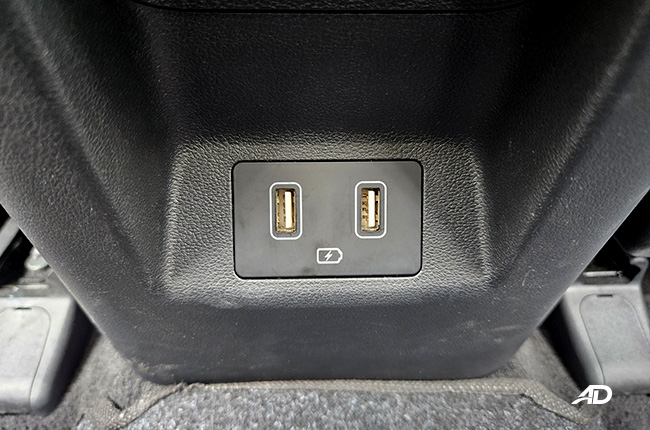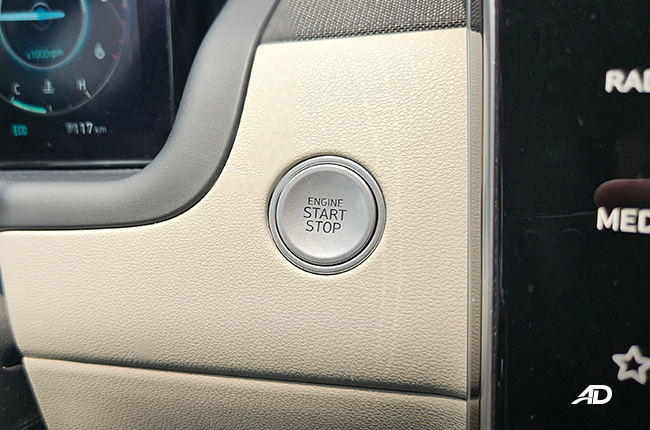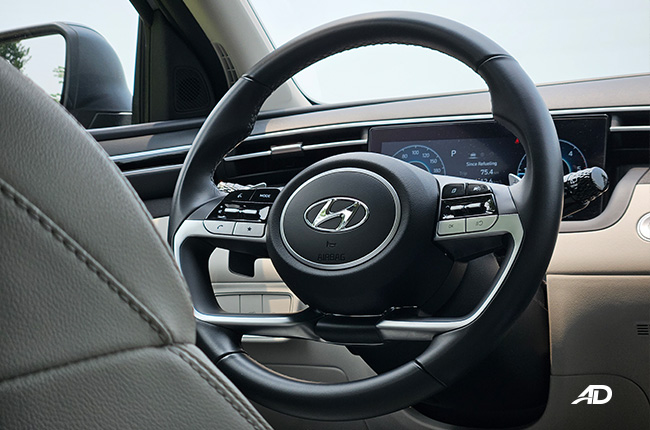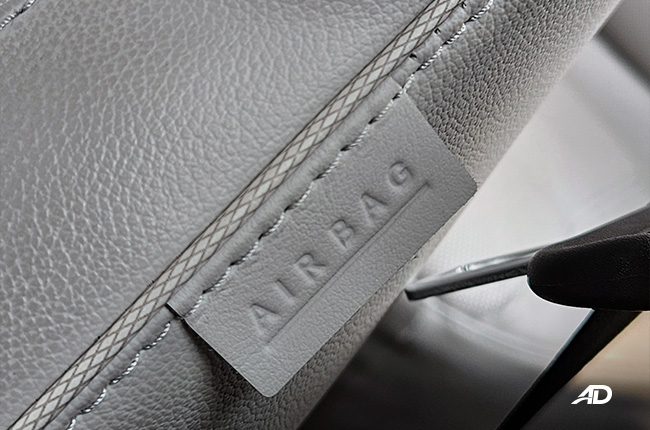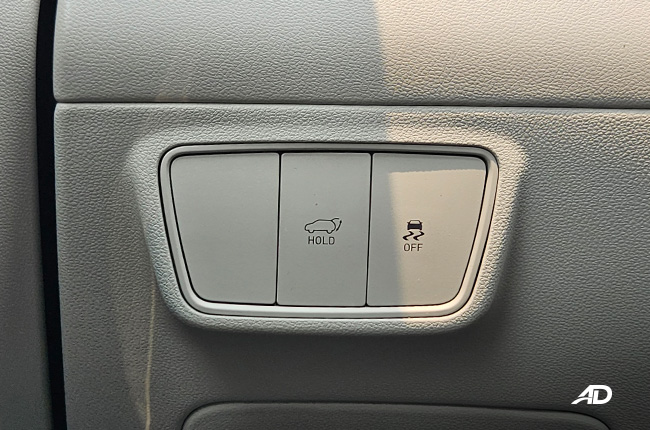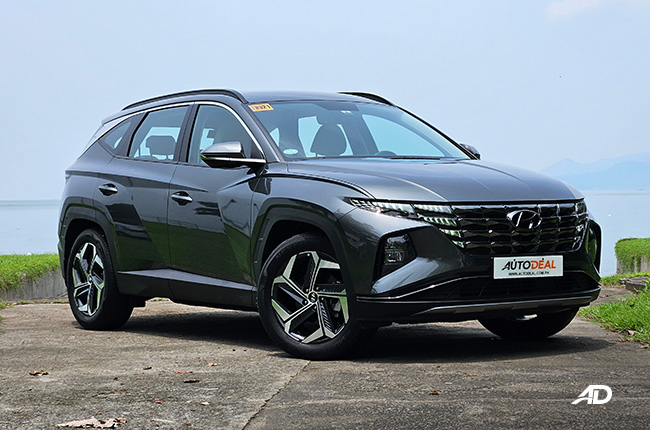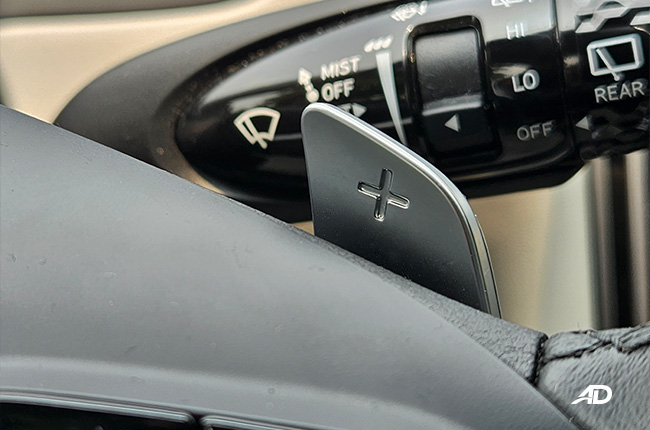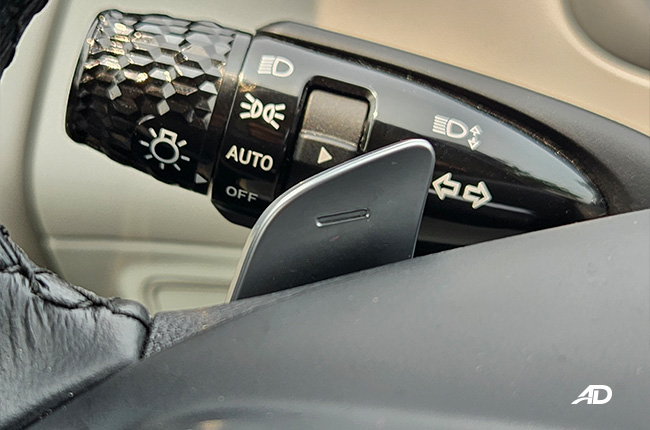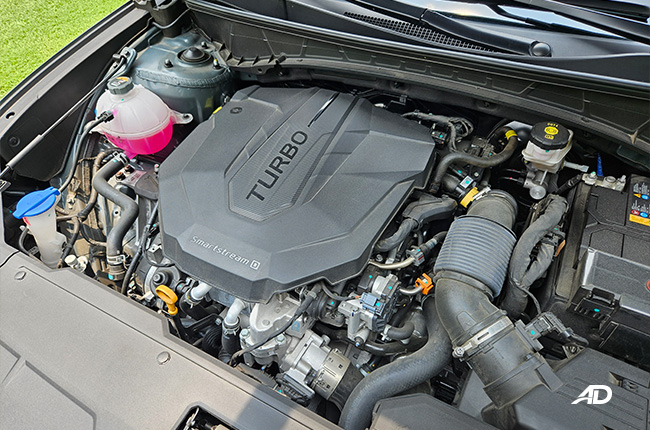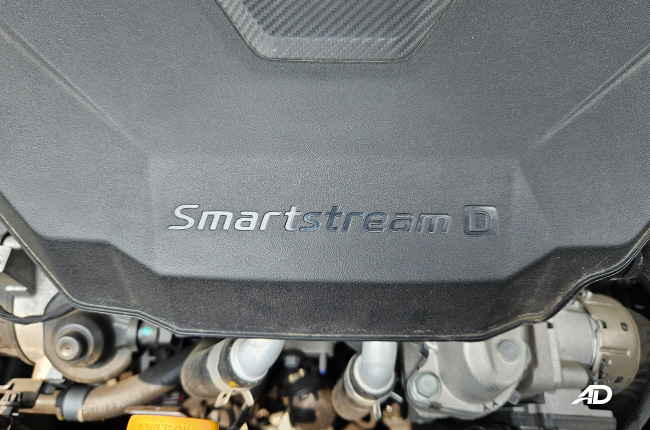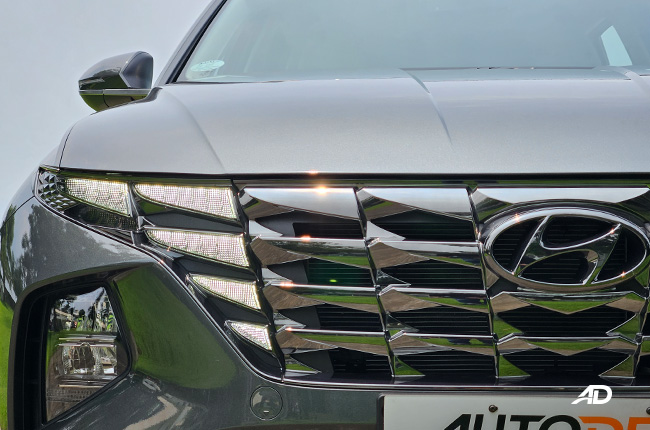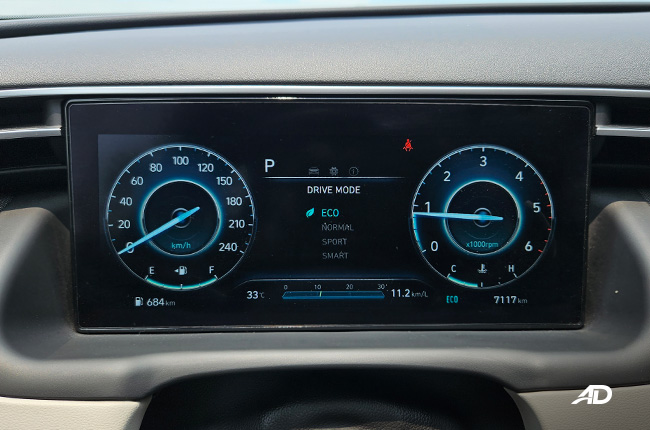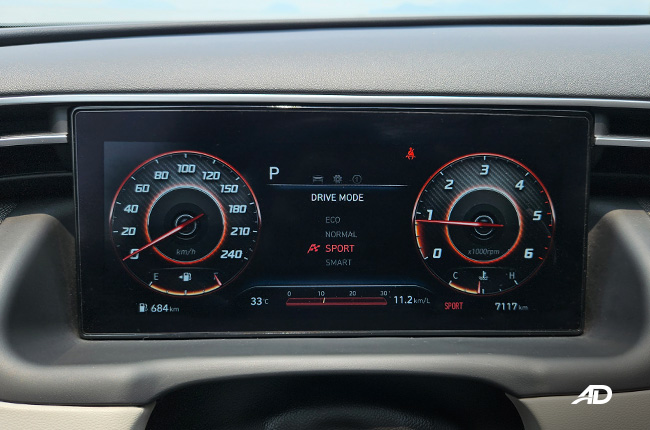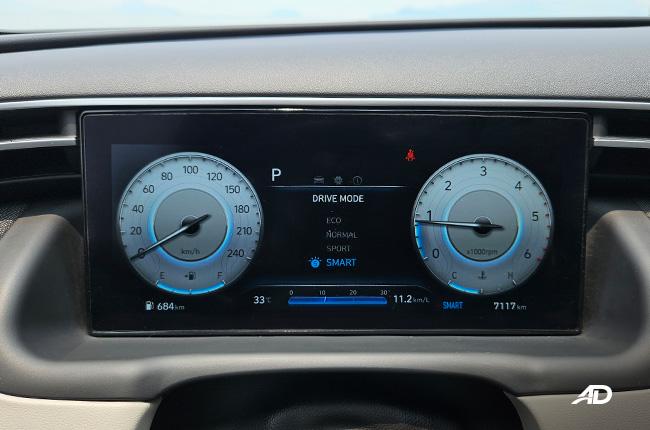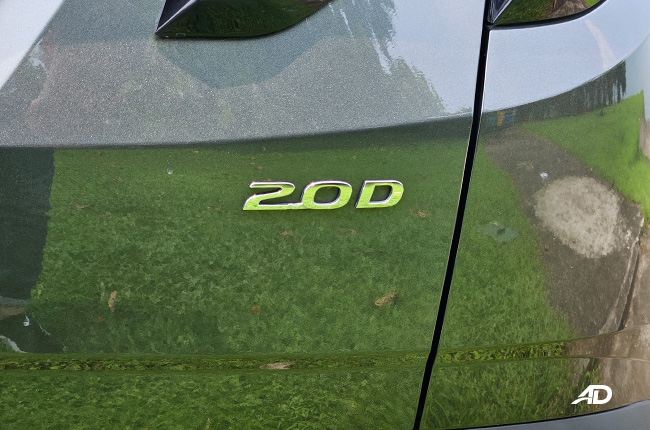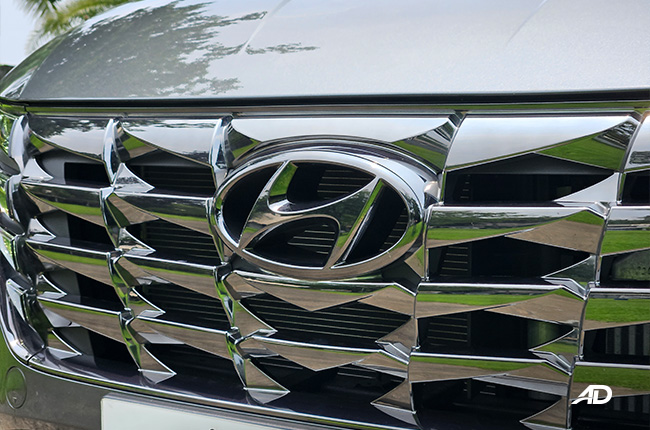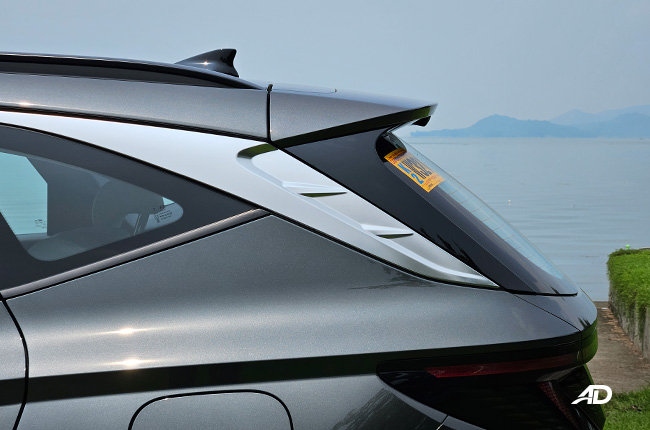
In 2019, we reviewed a Hyundai Tucson diesel, also in its top-of-the-line trim at the time, but we were rather disappointed. Truth be told, that year model served as that generation’s final curtain call, and while it was great back then, it didn’t quite hold up even by 2019 standards.
However, fast forward four years, and we finally have this, the 2023 Hyundai Tucson in its GLS+ CRDi 8AT trim, and what a car it is. Going from that to, now, this is totally night and day. The 2019 model was fine and serviceable, but it lacked an X-factor about it. Now, however, this 2023 model gets things just right, for a relatively decent price, and in a diesel configuration.
Engine Output (HP), Acceleration, Transmission, Handling 4.5/5
Exterior & Interior Design, Quality, Fit and Finish, Ergonomics 4.5/5
Cabin Comfort, Suspension, NVH Insulation 4.5/5
Convenience Technologies, Active and Passive Safety Features 3.0/5
Amount of the vehicle you get for the price, Fuel Efficiency 3.0/5
- Exciting 2.0-liter Turbo Diesel performance
- Responsive yet comfortable chassis
- Well insulated and quiet
- Clean looks, inside and out
- No Adaptive Cruise Control for its price
- No 360-Degree camera
- A lot of gloss-black plastics on the dashboard and key touchpoints
- Infotainment system needs a stability software update for wireless smartphone pairing
Exterior
Hyundai is definitely in its second renaissance, blending form and function into one cohesive package. We’re pretty used to how Hyundai crossovers look at this point, but the Tucson and the Creta both stand out with their integrated DRL and grille design. The parametric design language is novel and distinct, and unlike anything else we’ve tested. In terms of pushing the industry’s designs, Hyundai is up there, and in terms of execution, let’s just say it’s among some of our favorites in the segment so far. The front looks very distinct, and also different from that of the Creta. LEDs dominate the front and the headlights are top-notch performers, as expected.
The side should not be glossed over as the unique cuts and lines on the doors and towards the rear beltline of the car make it look rather elegant and futuristic at the same time. It’s well-executed, to say the least, and it prepares you for the awesomeness at the rear. We’ve had our fair share of aggressive designs in the past, but the Tucson’s taillamp design is up there in terms of concept and execution. Does it fit the lines of the car? Quite. Does it fit the character? Yes, but that comes with the drive. The ground clearance is set at 181mm, not too tall, not too short, just about par for the course in the segment, and you also get 19-inch two-tone alloy wheels which look great and match the aesthetic and the lines of the car.
If you didn’t like the Tucson before, you’re going to love it now, or at least we like how it looks. Yes, there are a few things that seem a little too aggressive at first glance, but trust us, once you drive this thing it’ll all tie in nicely.
Interior
Hyundai thought of waterfalls when they designed the Tucson’s interior, and that is true, but the use of glossy plastics is a bit much in our opinion. It didn’t take long for the infotainment housing, the door cards, and the gear selector to get covered in fingerprints but as long as you’re conscientious about where you put your hands, you won’t need to worry too much about it. Apart from that, however, we cannot help but wonder why the designers put gloss black on the indicator and wiper stalks. It puzzles us as to why, but at least the geometric pattern looks nice. There are also a few gaps between the dashboard and the door, but it works well enough.
Regardless, however, the overall look of the Tucson is very pleasing, and when it’s clean, the model’s very classy to sit in. The leather seats are white, which is another gripe that some people will have, but it’s rather classy while it is clean. Apart from the questionable material choices and perhaps the choice of going with non-LED interior lights, everything is sturdy and there are no bad rattles inside the car. Build quality is definitely a high point for us and the design of each individual switch and how they actuate is also a tip every time we want to adjust the volume or get to a function inside the cabin. We also didn’t expect the shifter to be pleasant to use, but it was satisfying nonetheless.
Meanwhile, the space inside the cabin is great. As a compact crossover, we expect to be able to stretch and cross our legs while sitting in the back. Rear passengers also get a set of air vents for added comfort, and there are also charging ports for up to two devices. The storage at the back is adequate, save for a single bottle holder on each side, so it’s just fair. The netting on the back of the seats is okay but may wear out over time as the elastic is stretched. Meanwhile, you get cup holders on the center armrest. However, one thing that is very questionable is the fact that the middle passenger is secured with a lap belt and not a three-point seatbelt. Fitting someone in the middle is very possible in this car thanks to the low center tunnel, but the lap belt is a miss, and that’s something that Hyundai should definitely address.
Overall, however, we’re quite satisfied with the car. Whether it will age well is another question, but as long as you keep things clean, you’re sure to get a smile on your face every time you set foot in the cabin. Plus, this was one of the rare cars where we had no trouble fitting five balikbayan boxes at the rear with all the rear seats folded and with room to spare.
Comfort
Riding in the Tucson is a trip. While things are rather stiff, similar to a lot of European cars, the ride doesn’t feel wobbly or unsure. The car feels planted, the vibrations from the road are controlled very well, and bumps and potholes are relatively flattened whenever this car goes over one or two at a time.
Noise vibration and harshness (NVH) is also a non-issue, and the Tucson handles highway wind noise, noise from other cars, and more exceptionally well. We don’t have a lot of complaints in the comfort section of the review because whatever tradeoff in terms of suspension stiffness was addressed well with regard to the drive of this car, more on that later.
Technology
Given how the Stargazer had a lot of wow factor for its price, and given how the Creta was decently equipped for its price, the Tucson falls a little short in its premium diesel variant. All that you need is here, but the more that you want is sort of lacking. There is no adaptive cruise control on board, just the standard stuff. There are parking sensors and a reverse camera, but no 360-degree monitor like on Hyundai’s higher-end models. You do get a nice infotainment system with wireless CarPlay and Android Auto, but the connection was spotty at best and had us reaching for a cable as soon as things started to go haywire.
All is well and good when it works, and the car had everything that we have come to expect from most brands. However, we believe Hyundai can do better, especially with regard to the stability of the eight-inch infotainment system’s Android Auto and Apple CarPlay. Even with that complaint, we were still amazed by the 10-inch LCD instrument cluster, and the fact that all the issues in the infotainment system can be addressed with a software update, hopefully. There is room to improve in this area.
Dwelling on the positives, however, we did like the fact that we could fit a large smartphone in the wireless charging pad, and that’s good considering that a good portion of the AutoDeal team like Plus and Ultra-sized phones. Now, we will admit that most of the things we said are quite negative but addressable, however, we did expect a little more from Hyundai, and hopefully the dealers are able to patch a few software issues that the infotainment has because we can live with just a backup camera and wired Android Auto and Apple CarPlay all things considered.
Safety
Apart from the lapbelt, there’s little to no issue with the passive safety features of the Tucson. You get dual airbags in the front, side airbags for—well—the sides, and also curtains for extra coverage, and a thorax unit for good measure. Also, Anti-Lock Brakes (ABS), electronic stability control, downhill brake control, hill-start assist, trailer stability assist, manual speed limit, an immobilizer, and ISOFIX anchors are all standard safety features for the GLS Premium.
We did expect more given that the Stargazer has advanced cruise and forward collision warning and emergency braking, however, and for the price that this model commands, it’s a bit of a miss in our opinion.
Driving and Handling
However many of the shortcomings of the Tucson with regard to its equipment, most of them a re made up for in the drive. While you can live without the fancy features, the Tucson’s main investment point is its driving dynamics.
Equipped with a 2.0-liter turbo-diesel CRDi engine with 182 hp and 416 Nm of torque, and paired with an eight-speed traditional automatic, you’re guaranteed to feel the pull that this car can deliver. Plus, the diesel pull is supplemented by a sizeable amount of power, making it feel rather exciting to push to higher speeds. On top of that, the sport mode is also well-layered with the rest of the drive modes which include Normal, Eco, and Smart. Among the four drive modes, we left the car mostly in Smart, which detects the driver’s behavior and adjusts accordingly.
Handling is also a high point with this car and throwing it around corners is unexpectedly fun to do. The chassis is stiff, but you can feel that it confidently grips the road while you’re turning the wheel. On the windiest road you can think of, you’d probably be faster in a sports car, but we wouldn’t be complaining if we were sat in the Tucson, to be quite honest. Paired with the peppy diesel motor, this car was plenty fun to drive. As the smallest diesel crossover in the lineup, it did not disappoint.
Even on the highway runs, the Tucson kept speed really well, and paired with the NVH insulation, it did a fantastic job of keeping all the occupant comfortable and undisturbed even at overtaking speeds.
Fuel Consumption
In the city, we were able to get about 8 to 10 km/L in varied traffic conditions. On the highway, we were getting between 14 to 16 km/L, again depending on the traffic conditions and how much of a runway you had before hitting traffic, and if you drove like a “hoodlum” as Caco put it. Mixed driving consumption based on our testing, with a lot of traffic and some highway and some Skyway, we got about 11 km/L give or take.
Verdict and Price

As great as the Tucson is to drive, it’s missing a few things. However important those things are will be up to you. The engineering that goes into making a car that feels great to drive will outweigh the small little nitpicks most of the time, but again, not everyone focuses solely on the drive.
For what it’s worth, the P1,840,000 price tag on the Tucson is rather pricey, but considering that the previous generation launched about four years ago from the time of publishing this review was more affordable by only P5,000 is remarkable. Seemingly unfazed by inflation and price increases, the Tucson is definitely worth a look if you’re not too particular about advanced features, would like a rather practical car, appreciate Hyundai’s design, and enjoys a great-driving experience, then the Tucson is probably for you. The drive is really where it is at for us, and putting its 2.0-liter diesel engine through its paces was a blast. This car’s definitely worth a test drive alone.
Exterior Photo Gallery
Interior Photo Gallery
Specifications
Engine
2.0 LFuel Type
DieselPerformance
183 hp @ 4,000 rpmTransmission
Automatic-
Summary
-
Name Hyundai Tucson 2.0 GLS+ AT (Diesel) Body Type Crossover Price ₱1,980,000 Transmission Category Automatic -
Engine
-
Engine Size 2.0 L Displacement 1,998 cc Number of Cylinders 4 Number of Valves 16 Transmission Type 8-Speed automatic -
Performance
-
Drivetrain Front-Wheel Drive Max Output (hp) 183 hp @ 4,000 rpm Max Torque (nm) 416 Nm @ 2,000 rpm -
Economy & Environment
-
Fuel Type Diesel Emissions Standard Euro 4 Fuel Capacity 54.0 L *Combined Fuel Consumption 11.0 km/L *brand manufacturer claim
-
Dimensions
-
Length 4,640 mm Width 1,865 mm Height 1,665 mm Wheelbase 2,755 mm Turning Circle 12 m Ground Clearance 181 mm Trunk Capacity 539 L Number of Doors 5 Number of Seats 5 -
Safety & Security
-
Driver's Airbag 1 Front Passenger's Airbag 1 Side Airbag 2 Curtain Airbag 2 Knee Airbag Auto Brake System Electronic Brake Distribution Anti-lock Brake System (ABS) with Multi-Collision Brake
Immobilizer Security Alarm Stability Control Electronic Door Locks Speed Sensing Door Locks ISOFIX Lane Departure Warning System Blind-Spot Detection System -
Features
-
Cruise Control Front Parking Sensors Rear Parking Sensors Leather Upholstery Push Start Button Wheel Size 19 in Wheels Metal Type Alloy Airconditioning System Dual Zone Auto Temperature Control Entertainment System 12.3-inch Touchscreen Display Connectivity AM/FM, Apple Carplay, Android Auto, Bluetooth with Voice Recognition and USB Navigation Ready Warranty 5 Years (200,000 km) Keyless Entry Roof Rack Sunroof Electric Adjustable Seats Power Steering Power Windows Power Outlet Steering Wheel Audio Control -
Technology
-
Active Park Assist Hill Start Assist AWD Modes n/a Tire Pressure Monitoring Heads-up Display Power Liftgate Start-stop System
Colors
Latest Review
-
2025 BAIC B30e Dune 4x4 HEV Review / Review
After 1,000 km behind the wheel of the BAIC B30e Dune, we share what we loved about this hybrid and what we don’t.
4.2 / 5 -
2025 MG G50 Plus Lux DCT Review / Review
Can affordable price and VIP aspirations blend together? We find out in this review of the MG G50 Plus Lux DCT.
4.0 / 5 -
2025 BYD Seal 5 DM-i Premium Review / Review
We test-drove the BYD Seal 5 DM-i, and its features and affordable price make it a strong hybrid sedan contender.
4.2 / 5
Popular Articles
-
Cheapest cars under P700,000 in the Philippines
Jerome Tresvalles · Sep 02, 2024
-
First car or next car, the Ford EcoSport is a tough package to beat
Jun 18, 2021
-
Car Maintenance checklist and guide – here’s everything you need to know
Earl Lee · Jan 12, 2021
-
Most fuel efficient family cars in the Philippines
Bryan Aaron Rivera · Nov 27, 2020
-
2021 Geely Okavango — Everything you need to know
Joey Deriquito · Nov 19, 2020
-
Family cars in the Philippines with the biggest trunks
Sep 20, 2023
-
Head to head: Toyota Rush vs. Suzuki XL7
Joey Deriquito · Oct 28, 2020
-
Why oil changes are important for your car
Earl Lee · Nov 10, 2020
-
2021 Kia Stonic — What you need to know about it
Joey Deriquito · Oct 16, 2020
-
Top 7 tips for buying a used car in the Philippines
Joey Deriquito · Nov 26, 2020




